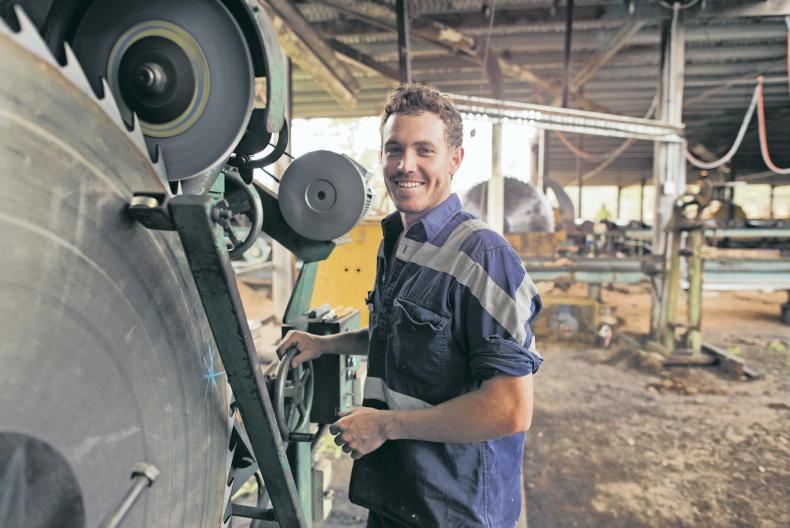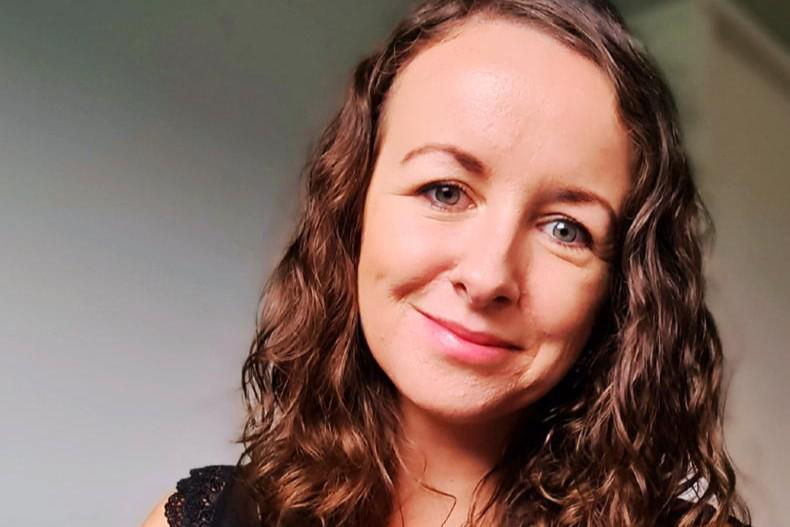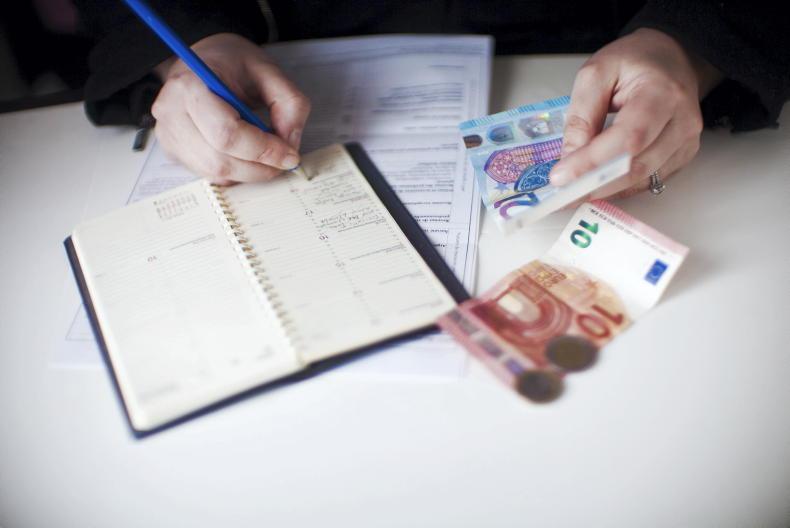A business can claim certain costs and expenditure against its profits to reduce the tax it pays. It may claim this expenditure on certain assets such as buildings, plant and equipment and land maintenance.
As these expenses are of a capital nature, ie classified as assets, these are not an allowable expense in a single year but chargeable against the businesses adjusted net profit over a seven- to eight-year period depending on the capital item.
Capital allowances arise for sole traders, partnerships and for companies.
They also arise for a person or company with a Case V source of income (rental income). Capital expenditure is not tax deductible, but tax relief is available through capital allowances for certain capital assets utilised.
Capital allowances are offset against CASE I/II profit (ie profit of trade/profession), when arriving at your taxable income.
Farm buildings
Capital allowances can be claimed on capital expenditure incurred on the construction of farm buildings.
Farm building capital allowances are available in respect of farm buildings and other works including farm roadways and land reclamation.
The allowance is calculated on a straight-line basis (same rate per annum for six years) of 15% for the first six years and 10% in year seven, net of any grants received.
Farm building capital allowances are available in respect of farm buildings and other works including farm roadways and land reclamation
VAT reclaimed from Revenue through VAT 58 online return can be deducted from capital expenditure when calculating the allowable cost.
Case study
John spends €100,000 building a new shed. John can receive a grant of €32,000 depending on the investment and submit an unregistered VAT claim (VAT 58) to Revenue for €12,000. The allowable cost for capital allowances is therefore €66,000, which is arrived at deducting the grant and VAT 58 received.
Capital expenditure: €100,000
Less, grant: (€32,000)
Less, unreg. VAT claim: (€12,000)
Allowable cost: €66,000
The capital allowance claimable each year is as follows:
Year 1 (15%): €9,900Year 2 (15%): €9,900Year 3 (15%): €9,900Year 4 (15%): €9,900Year 5 (15%): €9,900Year 6 (15%): €9,900Year 7 (10%): €6,600Capital allowances on plant and machinery can be claimed once they are used for the purposes of the farming trade. Capital allowances on plant and machinery are calculated on a straight-line basis of 12.5% per year over eight years.
A balancing charge or balancing allowance may arise on the disposal of individual assets of which have previously qualified for capital allowances.
Balancing charge
John bought a tractor for €175,000 in 2016 and traded it in 2019 for €110,000. The capital allowance claim for each year is €21,875 (€175,000 @ 12.5% for 2016, 2017 and 2018).
As he traded in the tractor in 2019 there is no capital allowance claimed. The tax written down value (TWDV) of the tractor at 1 January 2019 is €109,375 (€175,000 minus €65,625 [three years capital allowance claims]).
As the TWDV of the tractor (€109,375) is less than the trade-in value (€110,000), a balancing charge of €675 arises.
Dealing with a balancing charge
correctly
The balancing charge can be accounted for in two ways; the balancing charge can be rolled over against the allowable cost of a replacement asset (ie new tractor) or be included as CASE I/II profit as taxable income.
Balancing charges do not arise where the proceeds on the disposal of an individual asset are less than €2,000, although this will not apply to disposals between connected persons.
Balancing allowance
In this scenario, John trades in his tractor for €105,000. As the TWDV of the tractor (€109,375) is greater than the trade-in value (€105,000), a balancing allowance of €4,375 arises.
The balancing allowance is added in full to the current year capital allowances. In this example 15% + 4,375.
Be aware of the implications
Investment on farm can be an effective strategy for tax savings to efficiently fund capital works. However, the purchase of equipment or development works for the purpose of mitigating tax liabilities alone can prove costly in the long run.
Taking the €175,000 tractor purchased in the earlier example and presuming the farmer in question is returning profits subject to the high rate of income tax of 40%, the annual income tax saving for purchasing this machine is circa €8,750 per annum for eight years (175,000 x 12.5% = €21,875 @40% (high rate income tax ) =8,750).
If this machine is purchased using a finance agreement over a five year period at a 3.5% interest rate, it has an annual repayment of circa €38,200 for five years with a net interest bill of circa €16,000.
Consequently, there is a net cash deficit position of circa €28,200 per annum taking the loan repayments of €38,200 deducting the tax relief claimed by the capital allowance of €8,750 and tax relief on interest chargeable of €1,240 in the business for the eight-year period.
Machinery repayments: €38,200 Income tax: €9,900 Net negative cash: -€28,300So, while capital allowances reduce income tax liabilities, if misaligned with the core profitable business practises they can prove cash expensive in the long run.
Effective capital investment in farming is imperative for the evolution of any farm business and if planned correctly can be an essential element for income tax planning.
When deciding to make an investment, what must be examined is what will make the business more profitable?
And secondly, will it save time and make the current workload more manageable?
Capital allowances are a useful and essential mechanism but one that must be utilised in the context of strategic decision making for profitable businesses.
Liam Hennessy BAgrSc McComm FDC Group and member of the ACA: Ireland’s largest farm advisory service providing independent advice to over 55,000 farmers nationally. You can contact Liam via email at liamhennessy@fdc.ie
Read more
All farmers must qualify for additional step out of averaging - ICMSA
Renewal of stamp duty reliefs vital to viability of farms - IFA
A business can claim certain costs and expenditure against its profits to reduce the tax it pays. It may claim this expenditure on certain assets such as buildings, plant and equipment and land maintenance.
As these expenses are of a capital nature, ie classified as assets, these are not an allowable expense in a single year but chargeable against the businesses adjusted net profit over a seven- to eight-year period depending on the capital item.
Capital allowances arise for sole traders, partnerships and for companies.
They also arise for a person or company with a Case V source of income (rental income). Capital expenditure is not tax deductible, but tax relief is available through capital allowances for certain capital assets utilised.
Capital allowances are offset against CASE I/II profit (ie profit of trade/profession), when arriving at your taxable income.
Farm buildings
Capital allowances can be claimed on capital expenditure incurred on the construction of farm buildings.
Farm building capital allowances are available in respect of farm buildings and other works including farm roadways and land reclamation.
The allowance is calculated on a straight-line basis (same rate per annum for six years) of 15% for the first six years and 10% in year seven, net of any grants received.
Farm building capital allowances are available in respect of farm buildings and other works including farm roadways and land reclamation
VAT reclaimed from Revenue through VAT 58 online return can be deducted from capital expenditure when calculating the allowable cost.
Case study
John spends €100,000 building a new shed. John can receive a grant of €32,000 depending on the investment and submit an unregistered VAT claim (VAT 58) to Revenue for €12,000. The allowable cost for capital allowances is therefore €66,000, which is arrived at deducting the grant and VAT 58 received.
Capital expenditure: €100,000
Less, grant: (€32,000)
Less, unreg. VAT claim: (€12,000)
Allowable cost: €66,000
The capital allowance claimable each year is as follows:
Year 1 (15%): €9,900Year 2 (15%): €9,900Year 3 (15%): €9,900Year 4 (15%): €9,900Year 5 (15%): €9,900Year 6 (15%): €9,900Year 7 (10%): €6,600Capital allowances on plant and machinery can be claimed once they are used for the purposes of the farming trade. Capital allowances on plant and machinery are calculated on a straight-line basis of 12.5% per year over eight years.
A balancing charge or balancing allowance may arise on the disposal of individual assets of which have previously qualified for capital allowances.
Balancing charge
John bought a tractor for €175,000 in 2016 and traded it in 2019 for €110,000. The capital allowance claim for each year is €21,875 (€175,000 @ 12.5% for 2016, 2017 and 2018).
As he traded in the tractor in 2019 there is no capital allowance claimed. The tax written down value (TWDV) of the tractor at 1 January 2019 is €109,375 (€175,000 minus €65,625 [three years capital allowance claims]).
As the TWDV of the tractor (€109,375) is less than the trade-in value (€110,000), a balancing charge of €675 arises.
Dealing with a balancing charge
correctly
The balancing charge can be accounted for in two ways; the balancing charge can be rolled over against the allowable cost of a replacement asset (ie new tractor) or be included as CASE I/II profit as taxable income.
Balancing charges do not arise where the proceeds on the disposal of an individual asset are less than €2,000, although this will not apply to disposals between connected persons.
Balancing allowance
In this scenario, John trades in his tractor for €105,000. As the TWDV of the tractor (€109,375) is greater than the trade-in value (€105,000), a balancing allowance of €4,375 arises.
The balancing allowance is added in full to the current year capital allowances. In this example 15% + 4,375.
Be aware of the implications
Investment on farm can be an effective strategy for tax savings to efficiently fund capital works. However, the purchase of equipment or development works for the purpose of mitigating tax liabilities alone can prove costly in the long run.
Taking the €175,000 tractor purchased in the earlier example and presuming the farmer in question is returning profits subject to the high rate of income tax of 40%, the annual income tax saving for purchasing this machine is circa €8,750 per annum for eight years (175,000 x 12.5% = €21,875 @40% (high rate income tax ) =8,750).
If this machine is purchased using a finance agreement over a five year period at a 3.5% interest rate, it has an annual repayment of circa €38,200 for five years with a net interest bill of circa €16,000.
Consequently, there is a net cash deficit position of circa €28,200 per annum taking the loan repayments of €38,200 deducting the tax relief claimed by the capital allowance of €8,750 and tax relief on interest chargeable of €1,240 in the business for the eight-year period.
Machinery repayments: €38,200 Income tax: €9,900 Net negative cash: -€28,300So, while capital allowances reduce income tax liabilities, if misaligned with the core profitable business practises they can prove cash expensive in the long run.
Effective capital investment in farming is imperative for the evolution of any farm business and if planned correctly can be an essential element for income tax planning.
When deciding to make an investment, what must be examined is what will make the business more profitable?
And secondly, will it save time and make the current workload more manageable?
Capital allowances are a useful and essential mechanism but one that must be utilised in the context of strategic decision making for profitable businesses.
Liam Hennessy BAgrSc McComm FDC Group and member of the ACA: Ireland’s largest farm advisory service providing independent advice to over 55,000 farmers nationally. You can contact Liam via email at liamhennessy@fdc.ie
Read more
All farmers must qualify for additional step out of averaging - ICMSA
Renewal of stamp duty reliefs vital to viability of farms - IFA











SHARING OPTIONS